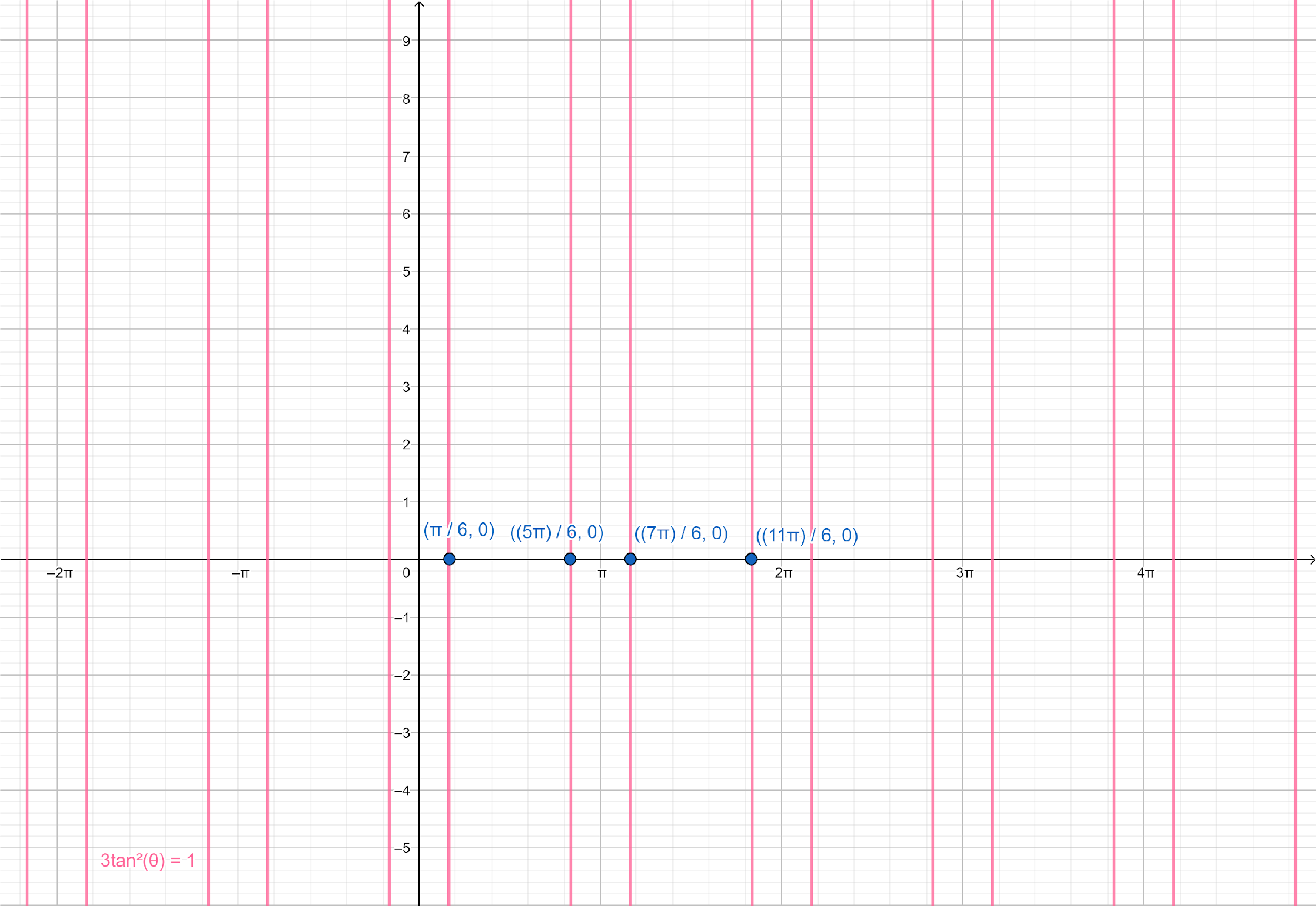Question
Question: How do you find the solution to \(3{\tan ^2}\theta = 1\) if \(0 \leqslant \theta < {360^ \circ }\)?...
How do you find the solution to 3tan2θ=1 if 0⩽θ<360∘?
Solution
First, divide both sides of the equation by 3 and take square root on both sides of the equation, Then, find the values of θ satisfying tanθ=31 using trigonometric properties.
Next, find the values of θ satisfying tanθ=−31 using trigonometric properties. Next, find all values of θ in the interval 0⩽θ<360∘. Then, we will get all solutions of the given equation in the given interval.
Formula used:
tan6π=31
tan(π−x)=−tanx
tan(2π−x)=−tanx
Complete step by step answer:
Given equation: 3tan2θ=1
We have to find all possible values of θ satisfying given equation in the interval 0⩽θ<360∘.
Divide both sides of the equation by 3, we get
tan2θ=31
Take square root on both sides of the equation, we get
tanθ=±31
First, we will find the values of θ satisfying tanθ=31.
So, take the inverse tan of both sides of the equation to extract θ from inside the tan.
θ=arctan(31)
Since, the exact value of arctan(31)=6π.
⇒θ=6π
Since, the tan function is positive in the first and third quadrants.
So, to find the second solution, add the reference angle from π to find the solution in the fourth quadrant.
θ=π+6π
⇒θ=67π
Since, the period of the tanθ function is π so values will repeat every π radians in both directions.
θ=6π+nπ,67π+nπ, for any integer n.
Now, we will find the values of θ satisfying tanθ=−31…(i)
So, using the property tan(π−x)=−tanx and tan6π=31 in equation (i).
⇒tanθ=−tan6π
⇒tanθ=tan(π−6π)
⇒θ=65π
Now, using the property tan(2π−x)=−tanx and tan6π=31 in equation (i).
⇒tanθ=−tan6π
⇒tanθ=tan(2π−6π)
⇒θ=611π
Since, the period of the tanθ function is π so values will repeat every π radians in both directions.
θ=65π+nπ,611π+nπ, for any integer n.
Now, find all values of θ in the interval 0⩽θ<360∘.
Since, it is given that θ∈[0,360∘), hence put n=0 in the general solution.
So, putting n=0 in θ=6π+nπ,67π+nπ, we get
θ=6π,67π
Now, putting n=0 in θ=65π+nπ,611π+nπ,we get
θ=65π,611π
Thus, θ=6π,65π,67π,611π or θ=30∘,150∘,210∘,330∘.
Hence, θ=6π,65π,67π,611π or θ=30∘,150∘,210∘,330∘ are solutions of the given equation in the interval 0⩽θ<360∘.
Note: In above question, we can find the solutions of given equation by plotting the equation, 3tan2θ=1 on graph paper and determine all solutions which lie in the interval, 0⩽θ<360∘.

From the graph paper, we can see that there are four values of θ in the interval 0⩽θ<360∘.
So, these will be the solutions of the given equation in the given interval.
Final solution: Hence, θ=6π,65π,67π,611π or θ=30∘,150∘,210∘,330∘ are solutions of the given equation in the interval 0⩽θ<360∘.
